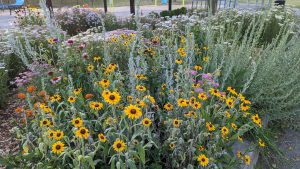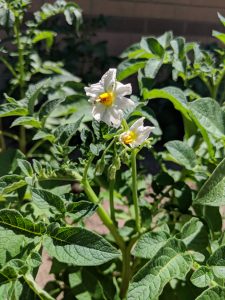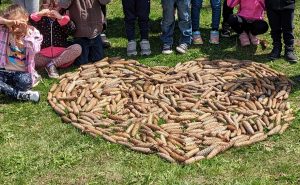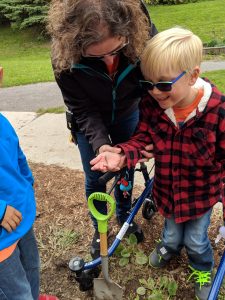With Earth Day, World Environment Day, and World Ocean Day approaching, your students will likely hear about complex and devastating ecological issues. In the second part of this blog on eco-anxiety, we look at how you can help students cope by taking action to solve local environmental problems and teaching advocacy skills.
Go Outside and Take Action
Local environmental problems need leadership to be solved. You and your students can take steps to show your community how it’s done!
Partner with Local Indigenous Communities: Your school board has an Indigenous Education Consultant who can help you connect with Indigenous speakers and organizations. As educators respond to the Truth and Reconciliation Calls to Action, it is important to build relationships with local Indigenous Peoples who can offer authentic teachings. They can help you with projects like ours, pictured above, choosing plants that have significance for the schoolyard. Learn about Indigenous perspectives and teachings to improve our relationship with nature and the need for wise use of the planet’s gifts.
Grow Food: I find potatoes the most straightforward food to grow in a schoolyard (pictured below). They require little attention; just loosen the soil, dig a hole, and plant a seed potato. You may add mulch or be prepared to pull a few weeds over the summer. Dig up your potato crop a few months later. This is a rewarding and delicious project!
Prevent Plastic Pollution: To stop plastic from ending up in waterways, I encourage you and your students to pick up litter around your school and recycle everything you can.
Guerrilla Gardening: Plant wildflowers wherever you can. Pick plants that suit your area. We’ve had success with brown-eyed Susan, yarrow, and even trilliums.
Raise and Release Butterflies: Painted Lady Caterpillars can be raised in spring, and monarchs in September. Release them near the wildflowers you planted. This project is not difficult and is very memorable for students. We rely on the generosity of the school council to support this project.
Learn about Advocacy and Do It
Students will be inspired by studying successful environmental advocates. Autumn Peltier is an excellent example, and she said these inspiring words:
“I feel like not only adults, but teachers and the education system have to empower [youth speaking up] and mentor that. Speaking up and using your voice is very important, something I feel like should be taught.” Source
Students will learn essential life skills like letter-writing, public speaking, and critical thinking when advocating for solutions to environmental issues.
Your school could challenge another school to work on a local environmental issue like composting lunch waste or a community litter clean-up. You could evaluate ecological problems in your school and advocate for better use of resources, energy saving, and walk-to-school campaigns.
Access Environmental Education Resources For example, the ETFO Climate Change Primer :
“As part of ETFO’s ongoing efforts towards equity and social justice, this new resource was developed to inform the membership about how the themes such as environmental racism, colonisation, and migration merge with climate change. This resource includes terminology, case studies, acknowledgement of change-makers, and resources for members to build their knowledge and understanding to inform their instructional practices. ETFO Members play an important and crucial role in raising awareness and creating learning environments for students that promote dialogue using a social justice and equity lens.”
Watch Canadian Films like the 5-minute animated short “What Rhymes with Toxic” by the National Film Board (grades 6 and up). The turtle in this film argues with a town council member who denies the health impacts of a chemical spill. Your students could write to your local or provincial government about environmental issues in your area.
Check out Ocean School. It is a free teaching resource with lesson plans to accompany videos. Included in this resource are Indigenous and scientific worldviews of ocean issues.
I hope you got some inspiration and will get your class outside for some environmental education this spring. Please let me know if you have other favourite resources for this topic, as I am always looking for ways to engage students in environmental education. Have fun learning outside and reducing eco-anxiety!





